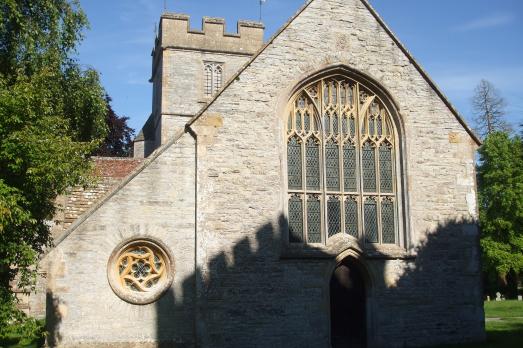The oldest parts of the church are on the West side of the South porch. Two scratch dials, one with a noonline at 1m 20cm from the ground, and another 1m 72cm. These are thought to be a Saxon sundial reused like the jambs in the building of the porch.
In Norman times Butleigh was recorded in the Doomsday Book as Boduchelei, belonging to the Abbey of Glastonbury. During the 14th century the church was largely rebuilt as a long narrow structure with an aisle less nave, chancel and a central tower. The fine South porch is of the decorated style of the late 14th century. At the time of the first Tudor King there was an insertion of the fine six light west window in the English perpendicular style. This tracery light glass is unlike any in the country.
In 1608 the church was given the addition of the north transept built by the Simcox family who were Lords of the Manor. In 1758 a one handed clock put into the tower. In 1829 Thomas Willement, the heraldic artist to George IV, was commissioned for the East window. The window near the porch is by Pugin (post 1833). In 1851, Mrs Alexander Hood of Butleigh Wootton was permitted to make an addition to be called the south transept. It contains an elaborate monument to the seafaring Hood brothers with a poem in blank verse by Southey.
Major changes to the church were carried out by George Neville-Grenville, formally Dean of Windsor, and his family. In 1850 the north transept was added, which today is the vestry. The hammerbeam roof was designed by John Buckler as were the chancel stalls complete with misericords. The six Bells were rehung on ball bearings in 1969.
There was a significant refurbishment at the start of the 21st century, new lighting and heating were installed, the font moved and pews rearranged to give a more spacious appearance.


